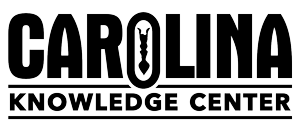Did you know that you can cover your biology course, start to finish, with Carolina’s top-selling kits? These 10 kits will get your students hands-on experiments, model generation, and data analysis, while meeting your course standards. Repeatedly chosen by thousands of teachers, these kits can help your students thrive, too.
Carolina® Forensic Dissection Kit
Conduct a forensic pig dissection by modeling the protocols used by pathologists for a human autopsy. Record observations of external anatomy and then use a Y incision to open the body cavity for a detailed examination. Students remove all organ systems, take detailed measurements and observations of each organ, and record their findings on an Autopsy Report. When students complete the forensic dissection, the organs are returned to the body cavity and incisions are sutured. Includes Carolina’s Perfect Solution® pigs, plus a preserved adult pig heart and kidney for comparison with the dissected specimen. Seven prepared microscope slides allow students to extend and enhance the dissection by examining the tissue types found within each system.
Planaria Regeneration Kit (with perishable)
Students gather evidence as they observe and identify patterns in the regrowth of planarians that have undergone several different controlled injuries. Evidence from the entire class’s observations of planaria regeneration is compiled and student groups revisit their original hypotheses regarding regeneration.


Chromosome Simulation 10-Station Kit
Using the phenomenon of planarians multiplying by both asexual and sexual reproduction, students make sense of the differences between mitosis and meiosis. First, chromosome models are used to answer the driving question, “What happens to chromosomes when a cell divides to make a copy of itself?” Chromosome models are developed and evaluated again, answering the meiosis driving question, “How is the chromosome number reduced in sperm and egg cells so when they combine their chromosomes, the new organism has the correct number?”
Modeling DNA to Protein 8-Station Kit
Using a hypothetical scenario of an infant diagnosed with sickle cell disease, students are introduced to translation by modeling the flow of genetic information on a region of the beta hemoglobin gene. Students then model transcription and translation using unique magnetic nucleotide bases, develop their own protein translation model, and use clay to demonstrate the physiological effects of the sickle cell mutation.
Wisconsin Fast Plants® 72-Hour Monohybrid Genetics Kit
Students germinate Wisconsin Fast Plants® seeds from P1, P2, F1, and F2 generations. They observe the seedlings from P1 and F1 and construct an inheritance pattern model to predict the phenotype and genotype of P2 and what the F2 seedlings will look like. After they examine the actual P2 and F2 seedlings, they can revise their model and explain the results based on the data they collected. A pre-lab fictional scenario introduces students to the phenomenon of phenotypic variation and gives students practice identifying an inheritance pattern.
Antibiotic Sensitivity Classroom Kit (with perishables)
Students investigate the phenomenon of the development of methicillin-resistant Staphylococcus aureus (MRSA) to analyze a timeline and correlate the introduction of antibiotics to the discovery of resistant bacteria. Students then test the inhibiting effects of antibiotics on 2 species of bacteria, producing evidence to address the driving question, “Why do we need to have so many different types of antibiotics?”

DNA Damage: Studying the Impact of UV Light 8-Station Kit (with perishables)
Using a UV-sensitive mutant strain of the yeast Saccharomyces cerevisiae, students investigate the impact of UV light on living organisms. The S. cerevisiae mutant strain is extremely sensitive to UV light because it lacks an effective method for repairing damaged DNA. First, students determine the impact of UV light on 2 strains of yeast, wild-type and UV-sensitive, and then they have an opportunity to design their own inquiry investigation to determine how to best prevent UV damage to the UV-sensitive yeast strain. Second, students design investigations to test various sunscreens, cloth samples, or myriad other options of their own choosing.
Algae Bead Photosynthesis Kit (with voucher)
Students learn how to make their own algae beads and develop and test a hypothesis about the relationship between light wavelength and photosynthesis rate. Next, student groups form hypotheses about how different-colored light filters affect photosynthesis rate and test their hypotheses using colored filters, their algae beads, and a bicarbonate indicator solution.
Cladograms and Evolution Kit
Students propose evolutionary relationships using 2 lines of evidence. First, students examine the external anatomical characteristics of 5 different preserved specimens and based on morphological similarities, create a cladogram. Students are then provided data about differences in the sequence of amino acids in a protein that the animals share. They construct an additional cladogram based on this molecular information. Considering both morphological characteristics and genetic information, students propose evolutionary relationships among the animals and try to explain any discrepancies between their 2 cladograms.
Oil Spill Bioremediation Kit
The role of bioremediation in the Deepwater Horizon oil spill (DHOS) is the investigative phenomenon for students as they conduct and analyze a controlled biodegradation experiment using drain cleaner microbes, corn oil, and a chemical indicator. Students ask questions and design their own experiments with biodegradation to see if they can make the simulation more realistic. They then they present their claims, evidence, reasoning, and arguments to their classmates.
These are our top-selling life science kits. From cells and structure and function to genetics and evolution, engage your students with hands-on activities that work and reduce your workload at the same time. Use them to help make your students’ path to success easier. Need more information? We’re always happy to answer your questions and provide a personalized quote.











